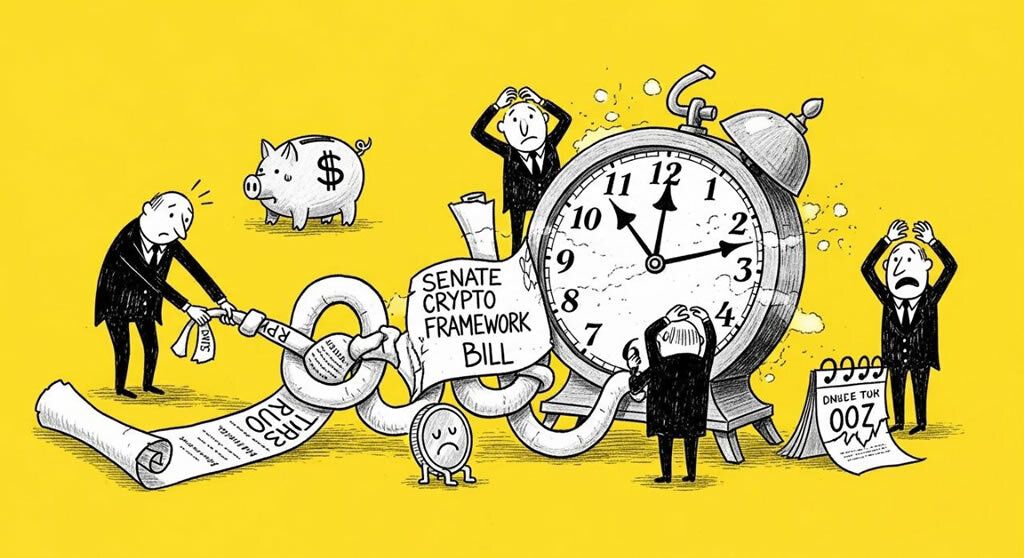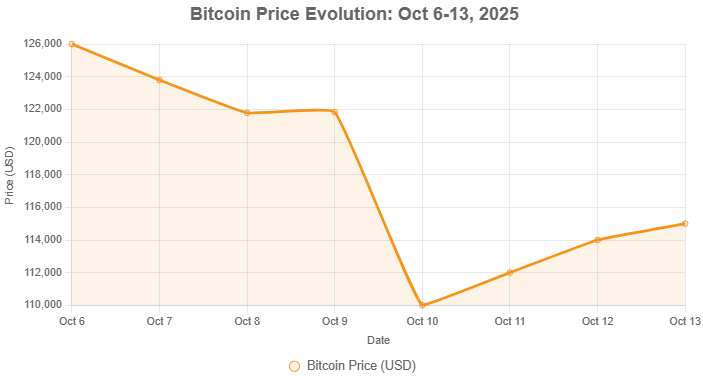Circle’s Application for First U.S. Digital Currency Bank
- Circle has applied to establish the first U.S. digital currency bank, named First National Digital Currency Bank, N.A., focusing on managing USDC reserves and providing digital asset custody.
- The application, filed on June 30, 2025, with the Office of the Comptroller of the Currency (OCC), aims to enhance regulatory oversight and align with the GENIUS Act.
- If approved, this could strengthen the stablecoin market, though the outcome and timeline remain uncertain.
On July 15, 2025, Circle Internet Group, Inc., the fintech firm behind the USDC stablecoin, filed an application with the Office of the Comptroller of the Currency (OCC) to establish the First National Digital Currency Bank, N.A. This move marks a significant milestone in the integration of digital currencies into the traditional financial system, aiming to bring USDC fully under federal regulation. The application, submitted on June 30, 2025, seeks to create a national trust institution focused on managing reserves, providing digital asset custody, and enhancing the regulatory framework for stablecoins, particularly in light of recent legislative developments like the GENIUS Act.
The Application
Circle’s application proposes the creation of the First National Digital Currency Bank, N.A., a national trust institution rather than a traditional consumer bank. It would focus on safeguarding USDC reserves, currently valued at over $62 billion as of early July 2025, and managing cash and short-term Treasury holdings. Additionally, the bank would offer digital asset custody services for institutional clients, including tokenized assets, corporate treasuries, and blockchain-based financial instruments. The application aligns with the GENIUS Act, passed in June 2025, which mandates 1:1 reserve backing, monthly attestations, and federal oversight for stablecoins. If approved, the bank would be subject to oversight by both the OCC and the Federal Reserve, ensuring compliance with high regulatory standards.
The primary entities involved include Circle, the OCC, and potentially the Federal Reserve. Currently, Circle’s reserves are managed by third-party custodians such as BlackRock and BNY Mellon, but the new bank would bring these functions in-house under federal regulation. This shift aims to enhance transparency and trust, positioning Circle as a leader in the stablecoin space. The application also reflects Circle’s history of regulatory compliance, including being the first to receive a NYDFS BitLicense in 2015, the first global stablecoin issuer to comply with the EU’s Markets in Crypto-Assets (MiCA) regulation in 2024, and receiving in-principle approval from the Abu Dhabi Global Market in April 2025.
Context and Background
Circle has established itself as a pioneer in the stablecoin market, issuing USDC, which is the second-largest stablecoin globally with a circulation exceeding $62 billion. In 2024, stablecoin transaction volume reached $27.6 trillion, surpassing the combined volume of Visa and Mastercard by 7.7%, highlighting the growing importance of stablecoins in global finance. Circle’s recent IPO on June 5, 2025, on the New York Stock Exchange (ticker: CRCL) further underscores its market position, opening at $69, listing at $31, and closing at $83, with a market cap near $6.9 billion, representing a 200% growth. The company’s 2024 interest income of $1.7 billion, mostly from holding USDC reserve assets, demonstrates its financial strength and operational scale.
| Detail | Information |
|---|---|
| Application Date | June 30, 2025 |
| Applicant | Circle Internet Group, Inc. (NYSE: CRCL) |
| Proposed Bank Name | First National Digital Currency Bank, N.A. |
| Regulatory Body | Office of the Comptroller of the Currency (OCC) |
| Purpose of Charter | Operate as a federally regulated trust institution, oversee USDC Reserve management, offer digital asset custody services to institutional customers |
| Benefits if Approved | Strengthen USDC infrastructure, meet GENIUS Act requirements, enhance U.S. dollar reach and resilience |
| CEO Statement | “Establishing a national digital currency trust bank of this kind marks a significant milestone in our goal to build an internet financial system that is transparent, efficient and accessible” – Jeremy Allaire |
| Historical Regulatory Achievements | First NYDFS BitLicense in 2015, first global stablecoin issuer to comply with EU MiCA in 2024, in-principle approval from Abu Dhabi Global Market in April 2025 |
| Current Reserves Custodian | BNY, managed by BlackRock |
| USDC Circulation (Early July 2025) | Over $62 billion |
| 2024 Interest Income | $1.7 billion, mostly from holding USDC reserve assets |
| IPO Details (June 5, 2025) | Opened at $69, listed at $31, closed at $83, market cap near $6.9 billion, 200% growth |
| 2024 Stablecoin Transaction Volume | $27.6 trillion, surpassed Visa and Mastercard combined volume by 7.7% |
Market Impact
The potential approval of Circle’s charter could significantly impact the stablecoin market by setting a new standard for regulatory compliance and trust. Jeremy Allaire, Circle’s Co-Founder, Chairman, and CEO, stated, “Establishing a national digital currency trust bank of this kind marks a significant milestone in our goal to build an internet financial system that is transparent, efficient, and accessible.” This move could enhance the reach and resilience of the U.S. dollar through digital means, as noted in Circle’s press release. It also aligns with Congress’s efforts to pass a federal regulatory framework for stablecoins, with the Senate having passed a bill earlier in the month and the House poised to pass it early in the summer, expected to be signed by U.S. President Donald Trump. If approved, Circle would become the second crypto firm with a national trust bank charter, following Anchorage Digital, potentially influencing other players in the crypto space to seek similar regulatory status.
Conclusion
Circle’s application to establish the First National Digital Currency Bank represents a pivotal moment in the evolution of digital currencies and their integration with traditional financial systems. If approved, it could pave the way for greater regulatory clarity and trust in stablecoins, potentially influencing other players in the crypto space to follow suit. As the crypto industry continues to mature, such developments highlight the ongoing efforts to bridge the gap between innovation and regulation, with potential implications for market valuation, user adoption, and community sentiment. Investors and enthusiasts should monitor official announcements and regulatory updates for further developments.
Disclaimer: This article is for informational purposes only and does not constitute legal, tax, investment, or financial advice. Readers should conduct their own research before making investment decisions.
© Cryptopress. For informational purposes only, not offered as advice of any kind.
Latest Content
- Understanding Cryptocurrency Market Crashes: Insights from the 2025 Decline
- Senate Crypto Framework Bill Stalls Amid Democrats’ Counterproposal on DeFi Regulations
- Bitcoin and Ethereum ETFs Record $755M Outflows Amid Escalating US-China Trade Tensions
- Weekly Crypto Roundup – Turbulence, Tariffs, Liquidations, and the Road to Recovery
- Bitcoin Rebounds Above $114,000 After Historic $19B Crypto Liquidation Wipeout
Related
- Circle’s Bold Move: USDC Issuer Seeks U.S. National Trust Bank Status The move aligns with the proposed GENIUS Act, aiming to integrate stablecoins into the U.S. financial system under federal oversight....
- Aave GHO Stablecoin Aave GHO Stablecoin: A New Decentralized Stablecoin from the Aave Protocol....
- Plasma: The Blockchain Challenging DeFi’s Stablecoin Status Quo Plasma aims to offer zero-fee USDT transactions and lightning-fast settlement by leveraging Bitcoin's security and an EVM-compatible environment....
- Crypto Events Archive A growing list of past crypto and blockchain events from around the world. Conferences, workshops, meetups, hackathons, conferences....







